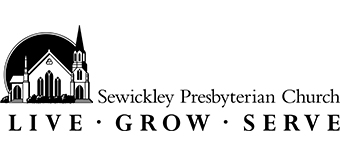AN EARLY HISTORY OF OUR CHURCH
As early as 1802, a small group of Presbyterians began holding religious services together in what was then called Sewickley Bottoms. A small group of persons of Scots-Irish descent had come to this area of Western Pennsylvania seeking property on which to settle. The group met often in homes or barns and, in the summer, under a grove of oak trees along a stream called Hoey’s Run. About this same time, another group of settlers established a community at Fairmount, along Big Sewickley Creek (now Duff City), on good farming land. The two groups often met together for worship when an itinerant preacher came to the area. One such minister was the Rev. John McClain, pastor of Montour Presbyterian Church, who had to cross the Ohio River by ferry and then travel by horseback to serve this small devout group.
Church Office Hours
-
Monday-Friday: 9 AM - 5 PM
Saturday: Closed
Sunday: Closed
Locate Us
414 Grant Street
Sewickley, PA 15143
412.741.4550

